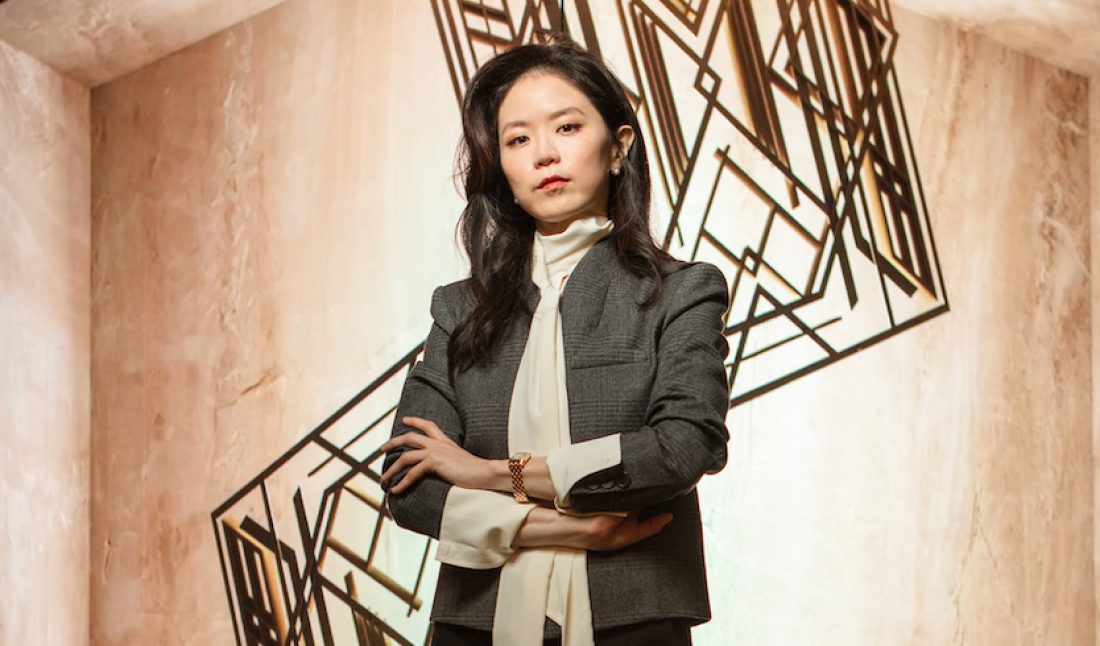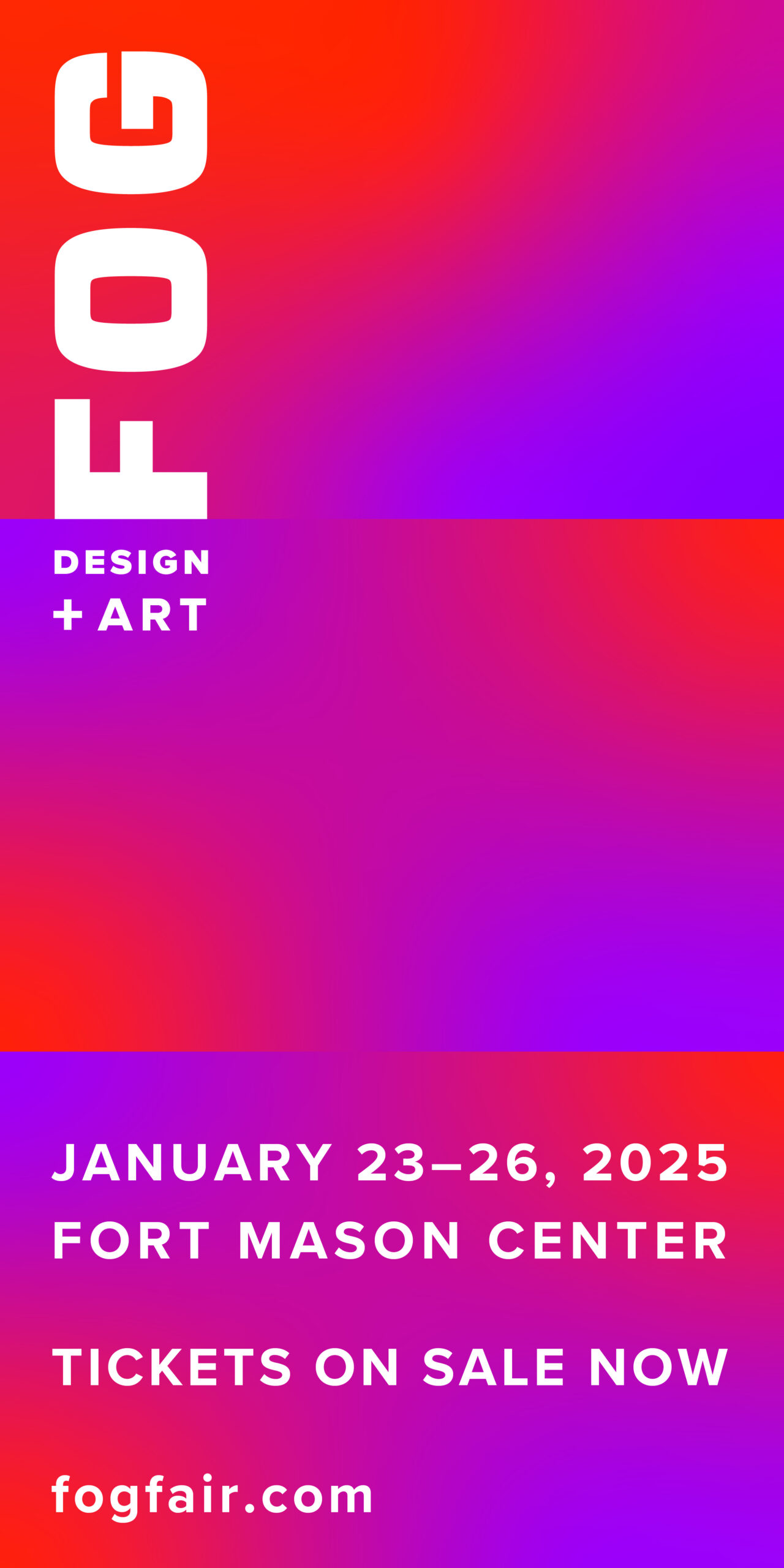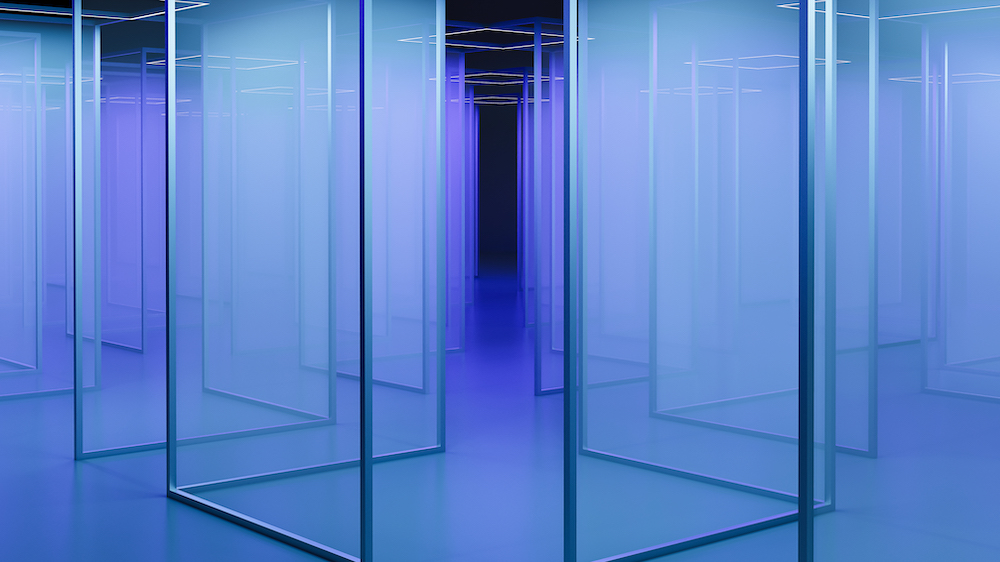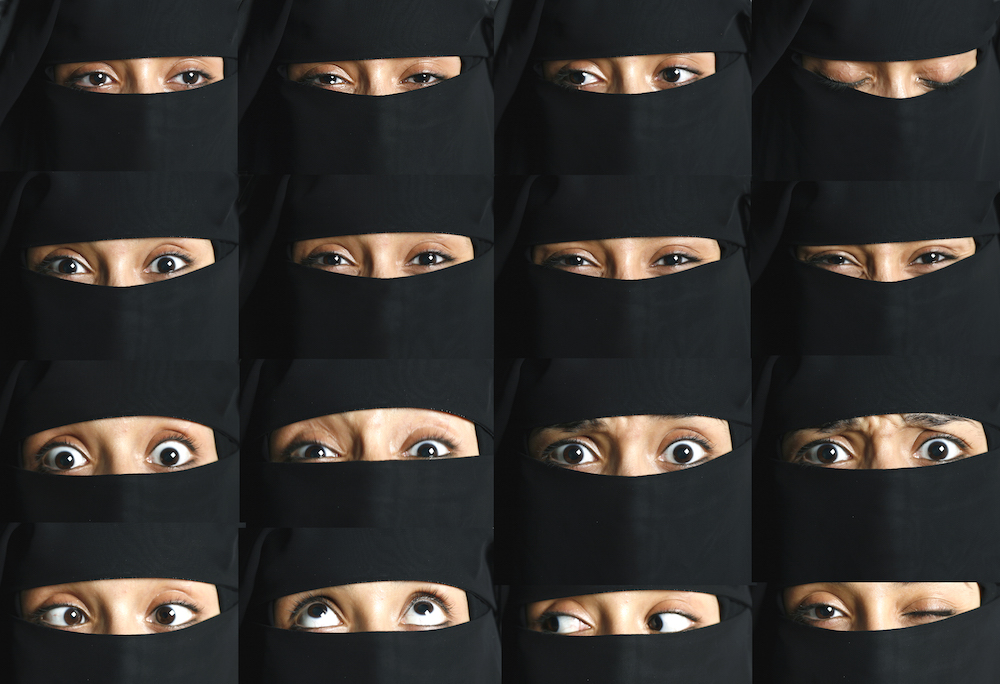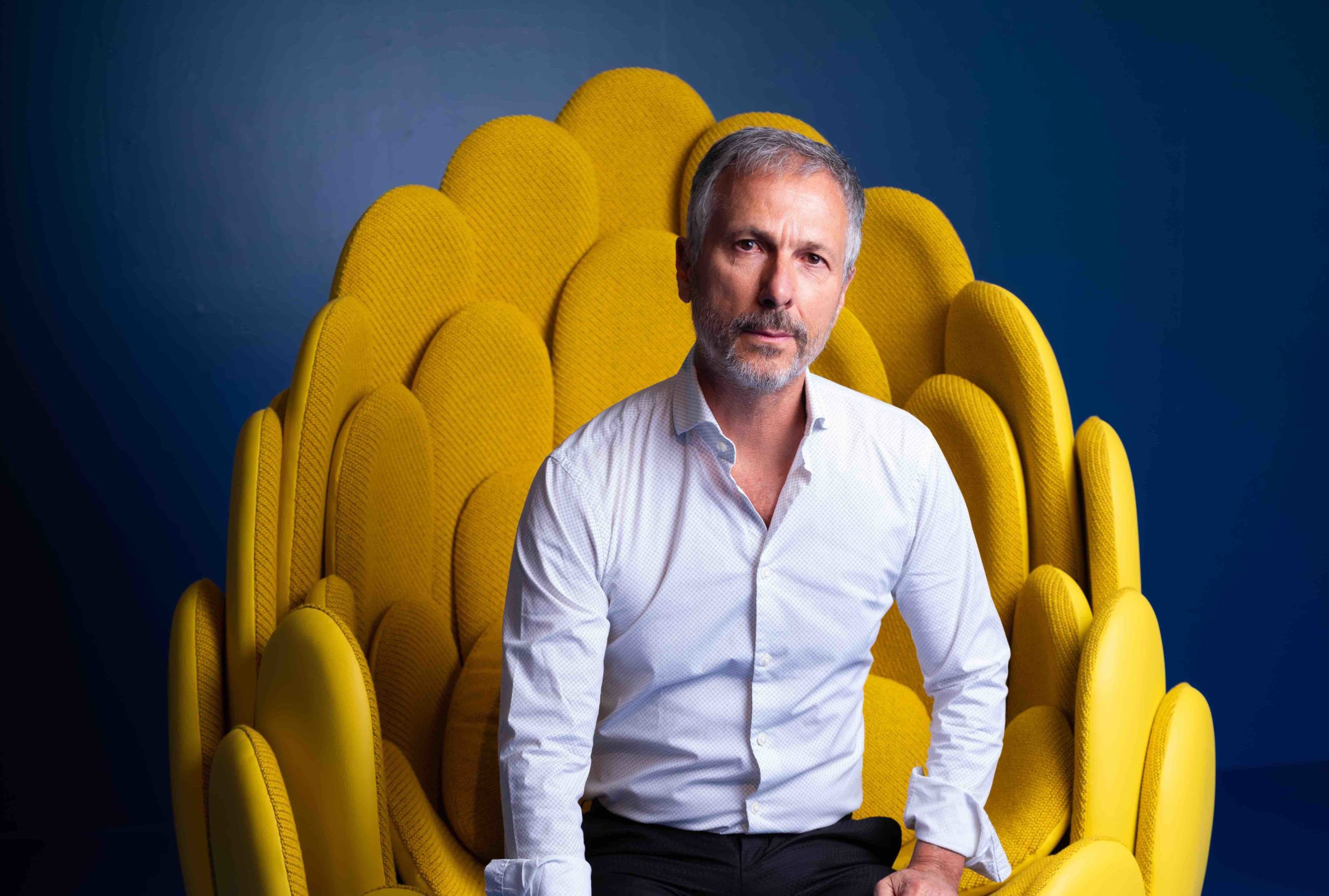Late last year, Jaeger-LeCoultre presented its most recent “Reverso Stories” exhibition in New York. For its North American premiere, the presentation celebrating the watchmaker’s storied Reverso timepiece from 1931 featured commissioned artworks from its Made of Makers program. Immersing guests into the creative and cultural universe of its design was a multimedia sculptural installation entitled Origin, designed by the Korean artist Dr. Yiyun Kang, who works in digital media. Inspired by the golden ratio, a touchpoint it shares with the Reverso model, the artwork was projected onto a large 3D screen and seamlessly blended nature and manmade design.
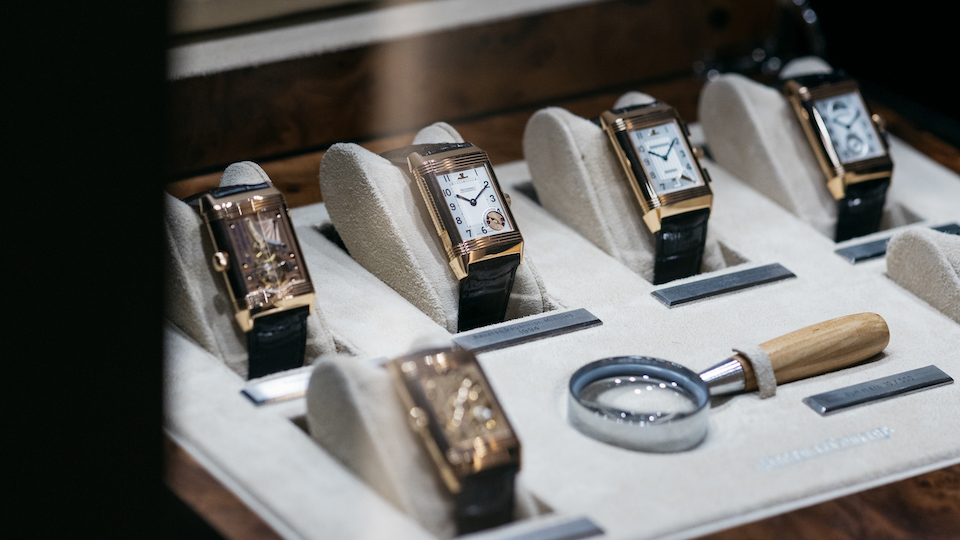 Courtesy of Jaeger LeCoultre.
Courtesy of Jaeger LeCoultre.
WHITEWALL: You were trained as a painter and are now working in digital media. What prompted that transition?
DR. YIYUN KANG: I started to move to video so that I could play with time. I learned installations so that I can play with space. I started to move to digital because I was so interested in the materiality. Based on what kind of software or hardware you use, it could be really versatile. When I use projection mapping, I can map the entire building. In this case, for Origin, it’s a more sculptural piece. I love the diversity of the digital medium.
“I started to move to video so that I could play with time,” —Dr. Yiyun Kang
WHITEWALL: How did visiting Jaeger-LeCoultre’s headquarters inspire Origin?
YK: Before that, I had an idea of the theme of Reverso and Golden Ratio, but I couldn’t develop it further. After visiting the manufacturer, it became quite clear. I was talking to the artisans about how they make watches, observing the whole process of watchmaking. It was in the middle of that beautiful nature, I could finally contextualize my work. I titled it Origin because I wanted to understand how the philosophy and the heritage of the brand are reflected in the Reverso with the help of Golden Ratio.
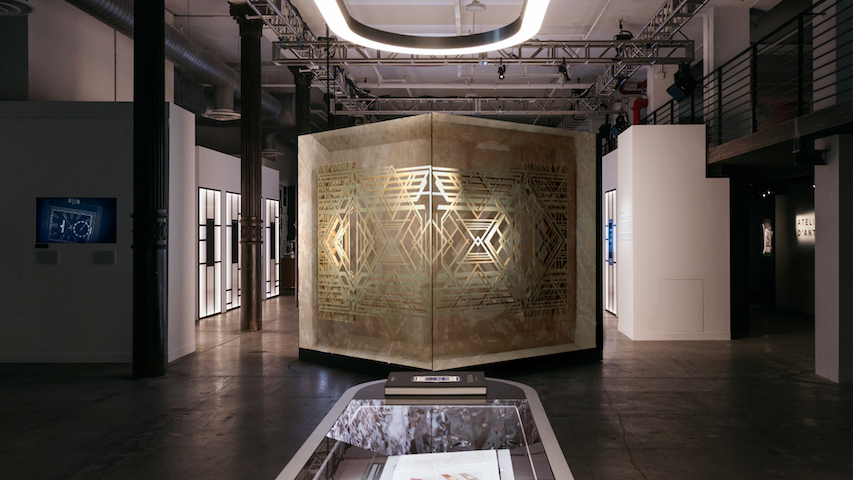 Installation view of “Origins” by Dr. Yiyun Kang, courtesy of Jaeger-LeCoultre.
Installation view of “Origins” by Dr. Yiyun Kang, courtesy of Jaeger-LeCoultre.
“It was in the middle of that beautiful nature, I could finally contextualize my work,” —Dr. Yiyun Kang
WW: What made you connect with the golden ratio, specifically?
YK: When most people first hear about the golden ratio, they believe it to exist in the face of the Mona Lisa or the Parthenon temple. But after my research, I found that it is not real. There is no scientific evidence that we can say that there is a golden ratio reflected in the smile of the Mona Lisa. I wanted to find if there was any object that exists that actually represents the golden ratio in it. In the research, I found that it is in nature, not in mankind’s beautiful artifacts.
If you look at a pinecone or a sunflower, they are specifically formulated in a way that makes them able to absorb more light and more water, allowing them to grow as a result. As evolution happens, they have evolved in this particular way, which happens to represent the Fibonacci number. It’s so captivating for me because it’s not a pattern for decoration or beauty; it’s a pattern for life. The golden ratio is somehow historically embedded in the origin of life and that’s probably why humanity has been drawn to the number for such a long time.
I found something really interesting in another paper about cognitive science. It looked at how humanity has been drawn to that Golden Ratio for such a long time because it’s the proportion that we see every day. We receive information from that particular ratio. For example, books, newspapers, TV screens, smartphones, and computer monitors are quite similar to the golden ratio. We instinctively find it comfortable as well as aesthetically pleasing.
I wanted to link the cognitive part of the golden ratio and how we perceive it, alongside the actual, evolutionary pattern for life that we find in nature—these interesting findings—to the Reverso.
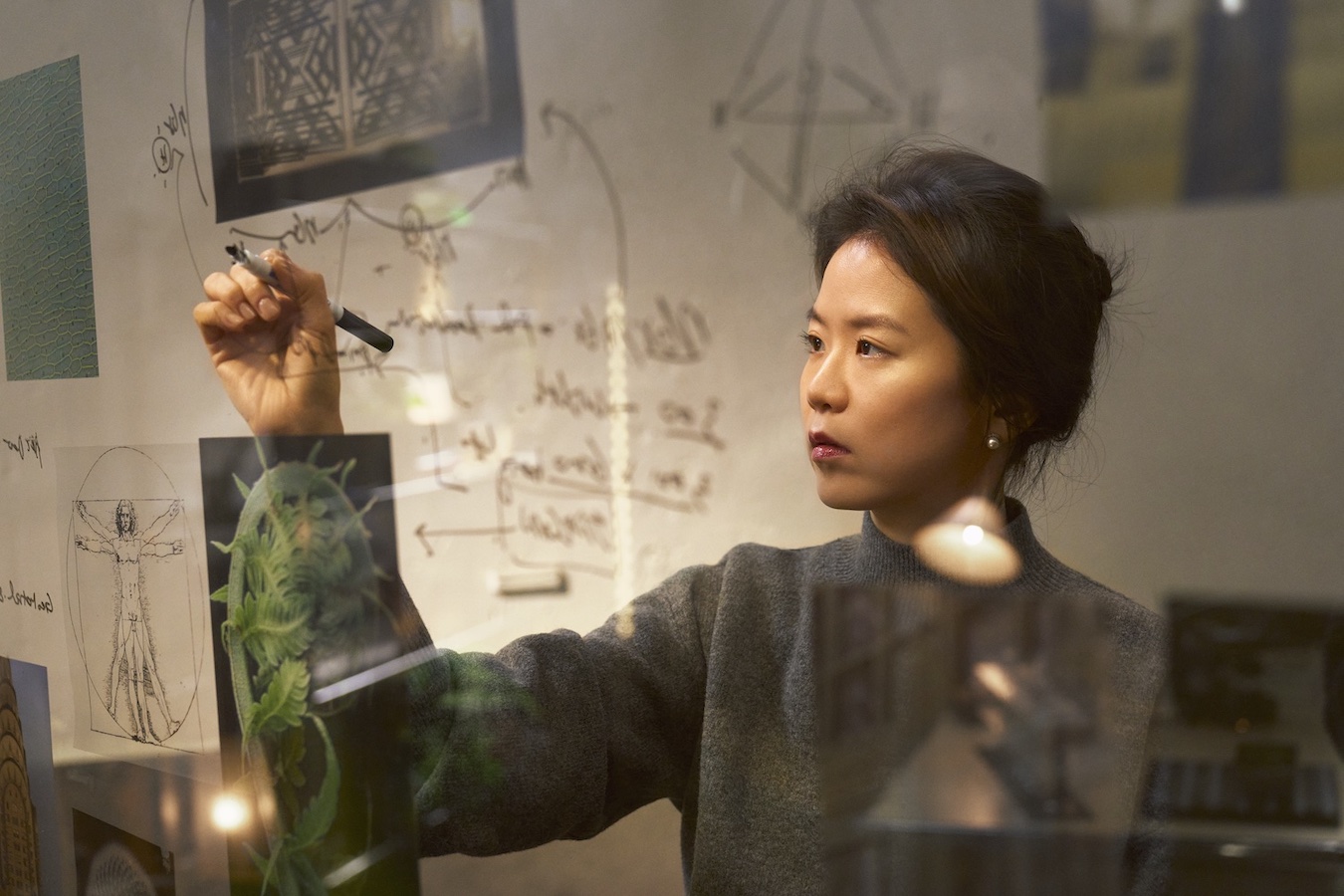 Courtesy of Jaeger-LeCoultre.
Courtesy of Jaeger-LeCoultre.
WW: You’ve previously said that your work investigates “the in-between—between the finite and infinite, reality and unreality, surface and depth, absence and presence.” How does Origin do this?
YK: I was inspired by the actual pine tree forest in the Vallée de Joux, where the manufacturer is. It represents the origin of the golden ratio that is represented in the pinecone. When connecting this theme to the Reverso, a more human artifact or, as I call it, a perfect watch, I realized it’s not just about the beautiful technician or the aesthetic design, but there are also ergonomic functions as well. I didn’t want to just create an artwork that was purely decorative or pretty. I wanted to tackle “Why does this watch incorporate the Golden Ratio in it?” In order to do that, it transcends the human element and it starts from nature. Origin was there.
That’s the reason why designers in the 1930s were so much inspired by the Golden Ratio and why it has remained one of the most iconic watches, still, nowadays. The logic is that it’s not just about humans’ interpretation of beauty; it’s connected to the beauty of nature.
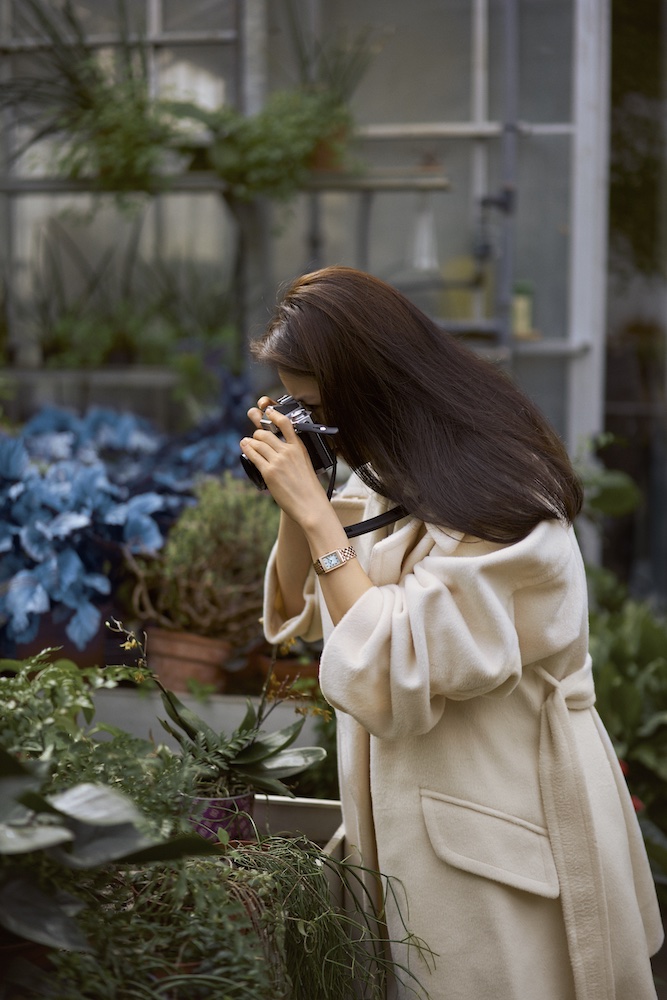 Courtesy of Jaeger-LeCoultre.
Courtesy of Jaeger-LeCoultre.
“I realized it’s not just about the beautiful technician or the aesthetic design, but there are also ergonomic functions as well,” —Dr. Yiyun Kang
WW: The piece was created with projection mapping, a relatively new art form. How has this allowed you to create immersive environments?
YK: Projection mapping is relatively new and a different way to immerse yourself than cinematic work, for example. When you go to the cinema and sit still in a dark room, you see this screen in front of you and watch it from the beginning toward the end.
In contrast, projection mapping is three-dimensional. It can be a small indoor experience or it can be massive, like an entire building. The scale varies, so your experience can also vary. It can be a completely overwhelming experience, or it can be an intimate experience depending on how artists use the medium. In my work, I use audio as well, because I want to dramatize a space even more. When the visual meets the audio, you have more options to experience and make your own version of immersion.
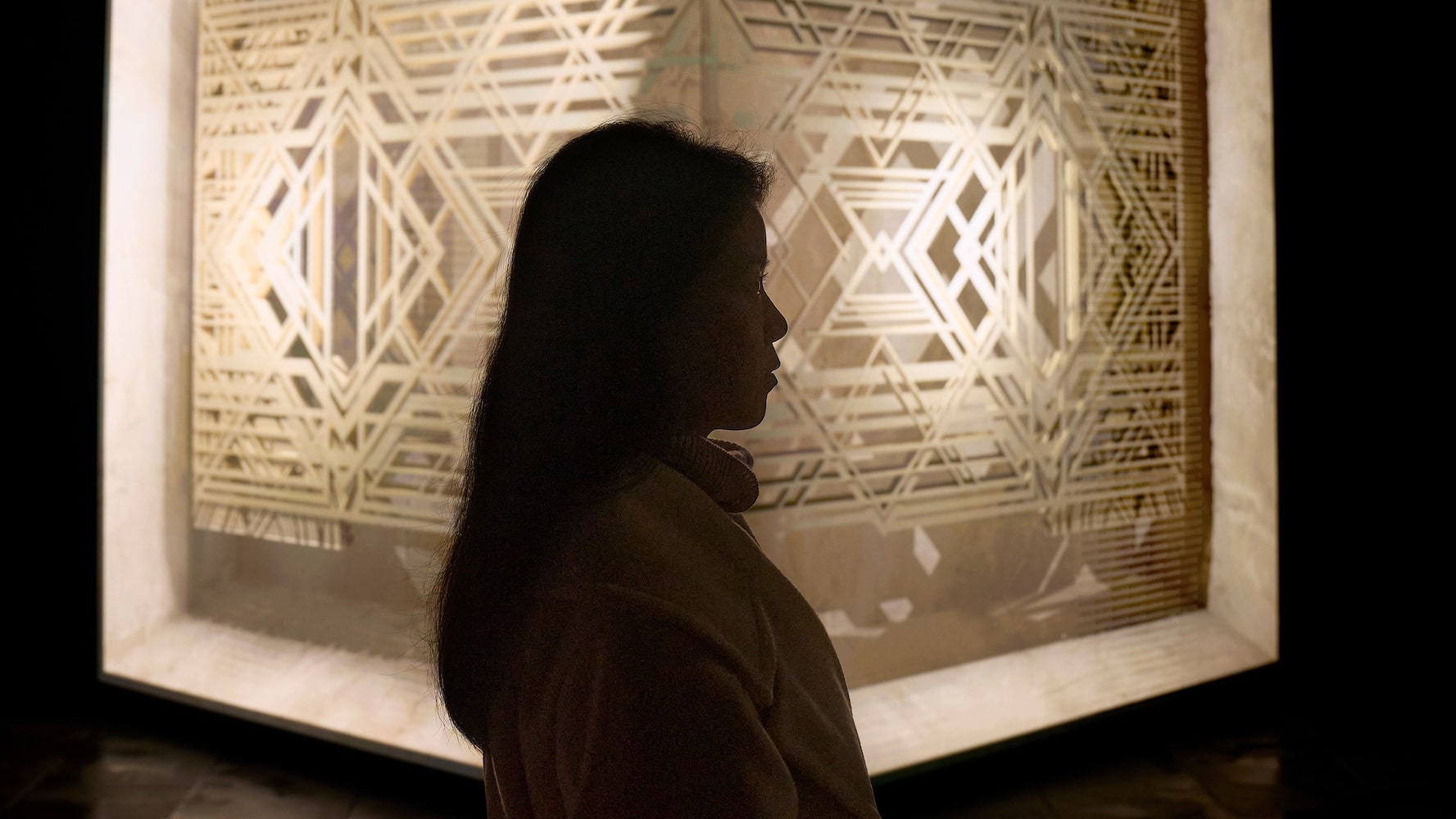 Courtesy of Jaeger-LeCoultre.
Courtesy of Jaeger-LeCoultre.
WW: What are you working on next?
YK: I’m working on an online project with Google. It will also be about human and nonhuman nature. We are examining earth and water data at the moment. It will look a little different from Origin, but fundamentally there’s a lot of continuing elements for me as an artist.






